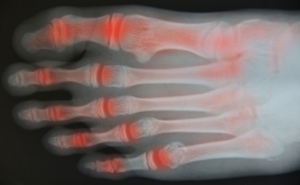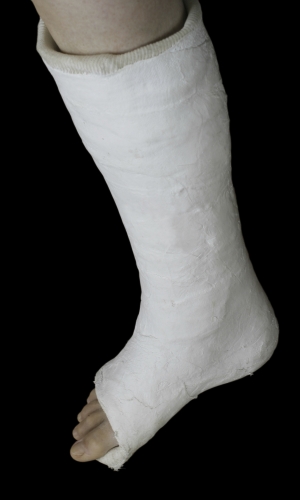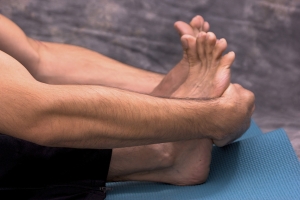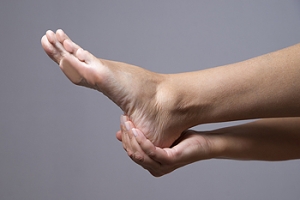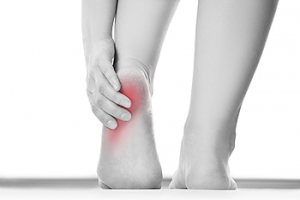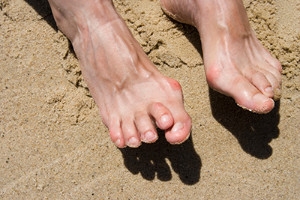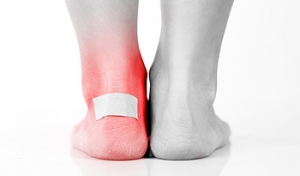Connect With Us
Featured Articles
Super User
Walking May Help With Symptoms of Arthritis
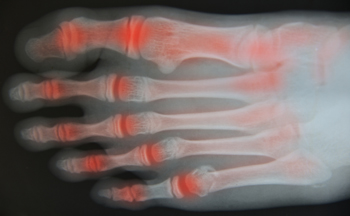 Research has suggested that walking may be one of the best methods to manage the symptoms of pain, stiffness, or inflammation that can coincide with arthritis. It is important to start off slowly by building a walking routine, and with some time and experience, it should become easier when performed every day. Walking can also be beneficial for losing weight which may help lessen the stress that the joints endure. Slowly increasing the frequency, intensity, and length of time that you walk is the preferred method and can help to alleviate the aches and pain from arthritis. Many patients find that counting how many steps they take every day can help track their daily progress for maximum benefits. If you have arthritis in your feet, it is strongly suggested that you consult with a podiatrist who can offer you proper management techniques.
Research has suggested that walking may be one of the best methods to manage the symptoms of pain, stiffness, or inflammation that can coincide with arthritis. It is important to start off slowly by building a walking routine, and with some time and experience, it should become easier when performed every day. Walking can also be beneficial for losing weight which may help lessen the stress that the joints endure. Slowly increasing the frequency, intensity, and length of time that you walk is the preferred method and can help to alleviate the aches and pain from arthritis. Many patients find that counting how many steps they take every day can help track their daily progress for maximum benefits. If you have arthritis in your feet, it is strongly suggested that you consult with a podiatrist who can offer you proper management techniques.
Arthritis can be a difficult condition to live with. If you are seeking treatment, contact Dr. Howard Horowitz from Bowie Foot & Ankle . Our doctor can provide the care you need to keep you pain-free and on your feet.
Arthritic Foot Care
Arthritis is a term that is commonly used to describe joint pain. The condition itself can occur to anyone of any age, race, or gender, and there are over 100 types of it. Nevertheless, arthritis is more commonly found in women compared to men, and it is also more prevalent in those who are overweight. The causes of arthritis vary depending on which type of arthritis you have. Osteoarthritis for example, is often caused by injury, while rheumatoid arthritis is caused by a misdirected immune system.
Symptoms
- Swelling
- Pain
- Stiffness
- Decreased Range of Motion
Arthritic symptoms range in severity, and they may come and go. Some symptoms stay the same for several years but could potentially get worse with time. Severe cases of arthritis can prevent its sufferers from performing daily activities and make walking difficult.
Risk Factors
- Occupation – Occupations requiring repetitive knee movements have been linked to osteoarthritis
- Obesity – Excess weight can contribute to osteoarthritis development
- Infection – Microbial agents can infect the joints and trigger arthritis
- Joint Injuries – Damage to joints may lead to osteoarthritis
- Age – Risk increases with age
- Gender –Most types are more common in women
- Genetics – Arthritis can be hereditary
If you suspect your arthritis is affecting your feet, it is crucial that you see a podiatrist immediately. Your doctor will be able to address your specific case and help you decide which treatment method is best for you.
If you have any questions, please feel free to contact our office located in Bowie, MD . We offer the newest diagnostic and treatment technologies for all your foot care needs.
Possible Treatments Options for a Broken Ankle
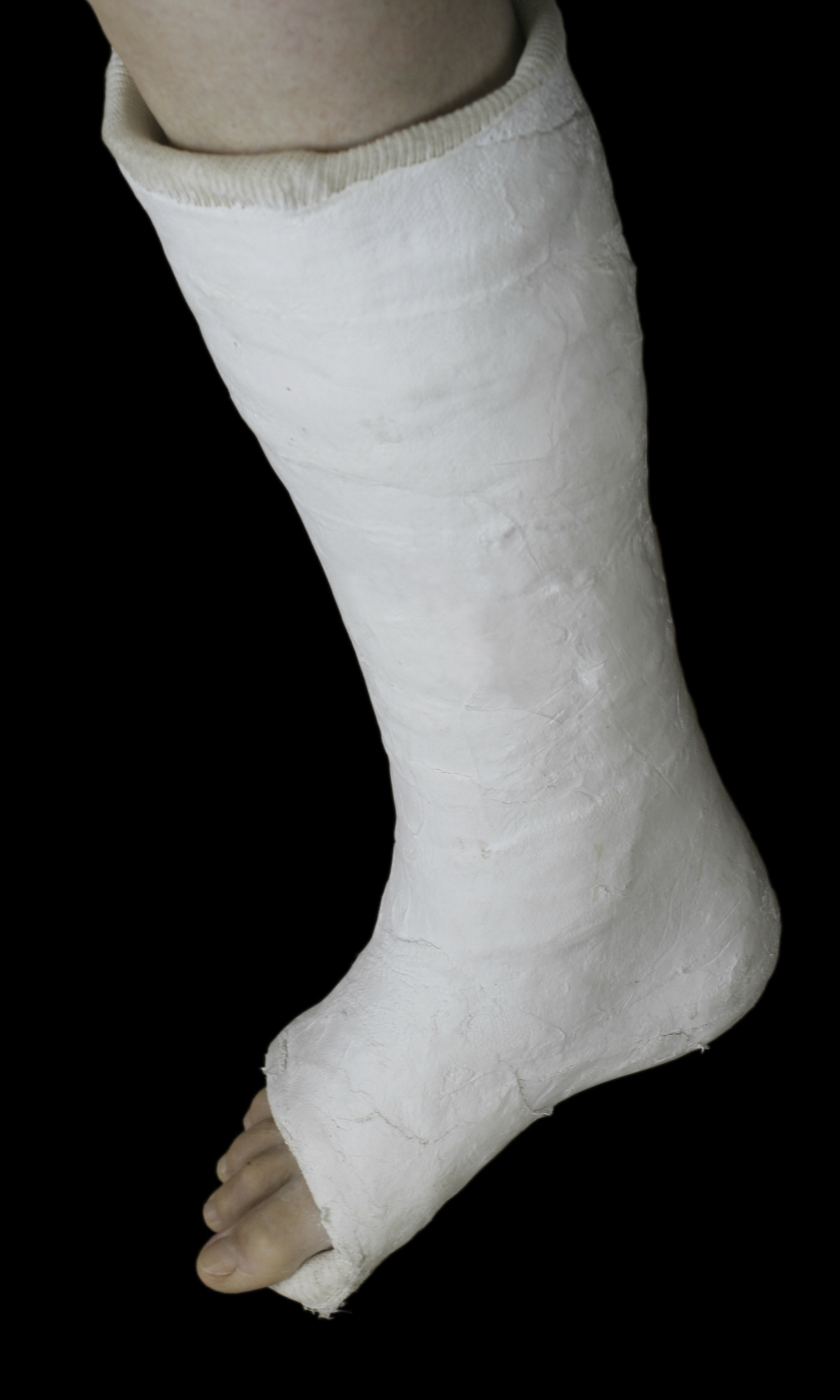 The pain and discomfort may be overwhelming if you experience a broken ankle. Research has shown that treatment needs to be started as quickly as possible and this may extend for a period of six to twelve weeks. There are specific symptoms that are associated with a broken ankle, including swelling and bruising, the inability to stand or walk on your foot, and the ankle appearing deformed if the bone is dislocated. An effective diagnosis is typically achieved by having an X-ray performed to determine the severity of the fracture. If the break is not severe, the patient may be fitted with a protective boot or a plaster cast in addition to using crutches, which are designed to keep the weight off the ankle. For more severe fractures, the bone may have to be realigned through manual manipulation or surgery, which may require wires and screws to be inserted into your foot. Please consult with a podiatrist if you feel you have broken your ankle to determine the proper treatment options.
The pain and discomfort may be overwhelming if you experience a broken ankle. Research has shown that treatment needs to be started as quickly as possible and this may extend for a period of six to twelve weeks. There are specific symptoms that are associated with a broken ankle, including swelling and bruising, the inability to stand or walk on your foot, and the ankle appearing deformed if the bone is dislocated. An effective diagnosis is typically achieved by having an X-ray performed to determine the severity of the fracture. If the break is not severe, the patient may be fitted with a protective boot or a plaster cast in addition to using crutches, which are designed to keep the weight off the ankle. For more severe fractures, the bone may have to be realigned through manual manipulation or surgery, which may require wires and screws to be inserted into your foot. Please consult with a podiatrist if you feel you have broken your ankle to determine the proper treatment options.
Broken ankles need immediate treatment. If you are seeking treatment, contact Dr. Howard Horowitz from Bowie Foot & Ankle . Our doctor can provide the care you need to keep you pain-free and on your feet.
Broken Ankles
A broken ankle is experienced when a person fractures their tibia or fibula in the lower leg and ankle area. Both of these bones are attached at the bottom of the leg and combine to form what we know to be our ankle.
When a physician is referring to a break of the ankle, he or she is usually referring to a break in the area where the tibia and fibula are joined to create our ankle joint. Ankles are more prone to fractures because the ankle is an area that suffers a lot of pressure and stress. There are some obvious signs when a person experiences a fractured ankle, and the following symptoms may be present.
Symptoms of a Fractured Ankle
- Excessive pain when the area is touched or when any pressure is placed on the ankle
- Swelling around the area
- Bruising of the area
- Area appears to be deformed
If you suspect an ankle fracture, it is recommended to seek treatment as soon as possible. The sooner you have your podiatrist diagnose the fracture, the quicker you’ll be on the way towards recovery.
If you have any questions, please feel free to contact our office located in Bowie, MD . We offer the newest diagnostic and treatment technologies for all your foot care needs.
All About Broken Ankles
Broken ankles are a serious injury that can lead to an inability to walk, function, and also cause a significant amount of pain. A broken ankle is a break in one of the three bones in your body that connect at the ankle joint: the tibia, the fibula, and the talus. The tibia and fibula are your two primary leg bones that connect at the knee, which sit directly upon the talus bone. This is protected by a fibrous membrane that allows for movement in the ankle joint. A broken ankle is usually caused by the foot rolling under or twisting too far, causing one of these three bones to snap.
A broken ankle is different from an ankle sprain, which occurs when the ankle ligaments are ripped or torn but no bones have been broken. A sprain can still be very severe, causing bruising in the foot and an inability to hold your own weight, much like a broken ankle would. If you’re unable to stand, and suspect that you have a broken ankle, the first thing to do would be to get an immediate X-ray to determine the severity of the break.
A common cause of broken ankles is when the ankle is rolled over with enough pressure to break the bones. This usually happens during exercise, sports, or other physical activity. Another common cause is a fall or jump from a tall height.
One immediate treatment for pain relief is elevating the foot above your head to reduce blood flow to the injured area. You can also apply ice packs to your ankle to help reduce swelling, redness, inflammation, and pain. After these initial steps, getting a cast and staying off your feet as much as possible will aid in the recovery of the broken ankle. The less movement and stress the ankle has to endure, the more complete it will heal. A doctor can determine if surgery is needed in order to heal correctly. In these cases, an operation may be the only option to ensure the ability to walk properly again, followed by physical therapy and rehabilitation.
It is highly important to determine if surgery is needed early on, because a broken ankle can become much more severe than you realize. If not professionally treated, the broken ankle will inhibit your walking, daily functioning, and produce a large amount of pain. Treating your broken ankle early on will help prevent further damage to it.
The Purpose of the Arches in the Feet
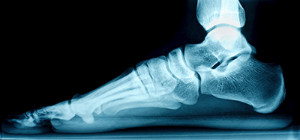 A condition that is known as flat feet, which can also be referred to as fallen arches, affects most babies when they are born. When walking commences, the arches will typically develop as the foot endures pressure from body weight. The purpose of the arch aids in maintaining balance in the body, and provides a spring to the step. Arches are generally strong, and this may help the feet to adjust to a variety of surfaces that are walked on. Some people never develop arches, and this condition may prove to be uncomfortable and painful. This may often cause tension in the muscles, ligaments and tendons the feet are comprised of as a result of not being supported while walking or running. There may be several reasons for this condition to occur, including a genetic trait, injuries to the foot and ankle, or a medical condition such as rheumatoid arthritis. If you are afflicted with flat feet, it’s advised to schedule a consultation with a podiatrist to learn about correct treatment options.
A condition that is known as flat feet, which can also be referred to as fallen arches, affects most babies when they are born. When walking commences, the arches will typically develop as the foot endures pressure from body weight. The purpose of the arch aids in maintaining balance in the body, and provides a spring to the step. Arches are generally strong, and this may help the feet to adjust to a variety of surfaces that are walked on. Some people never develop arches, and this condition may prove to be uncomfortable and painful. This may often cause tension in the muscles, ligaments and tendons the feet are comprised of as a result of not being supported while walking or running. There may be several reasons for this condition to occur, including a genetic trait, injuries to the foot and ankle, or a medical condition such as rheumatoid arthritis. If you are afflicted with flat feet, it’s advised to schedule a consultation with a podiatrist to learn about correct treatment options.
Flatfoot is a condition many people suffer from. If you have flat feet, contact Dr. Howard Horowitz from Bowie Foot & Ankle . Our doctor will treat your foot and ankle needs.
What Are Flat Feet?
Flatfoot is a condition in which the arch of the foot is depressed and the sole of the foot is almost completely in contact with the ground. About 20-30% of the population generally has flat feet because their arches never formed during growth.
Conditions & Problems:
Having flat feet makes it difficult to run or walk because of the stress placed on the ankles.
Alignment – The general alignment of your legs can be disrupted, because the ankles move inward which can cause major discomfort.
Knees – If you have complications with your knees, flat feet can be a contributor to arthritis in that area.
Symptoms
- Pain around the heel or arch area
- Trouble standing on the tip toe
- Swelling around the inside of the ankle
- Flat look to one or both feet
- Having your shoes feel uneven when worn
Treatment
If you are experiencing pain and stress on the foot you may weaken the posterior tibial tendon, which runs around the inside of the ankle.
If you have any questions please feel free to contact our office located in Bowie, MD . We offer the newest diagnostic and treatment technologies for all your foot and ankle needs.
Read more about Flat FeetHow to Properly Stretch the Feet
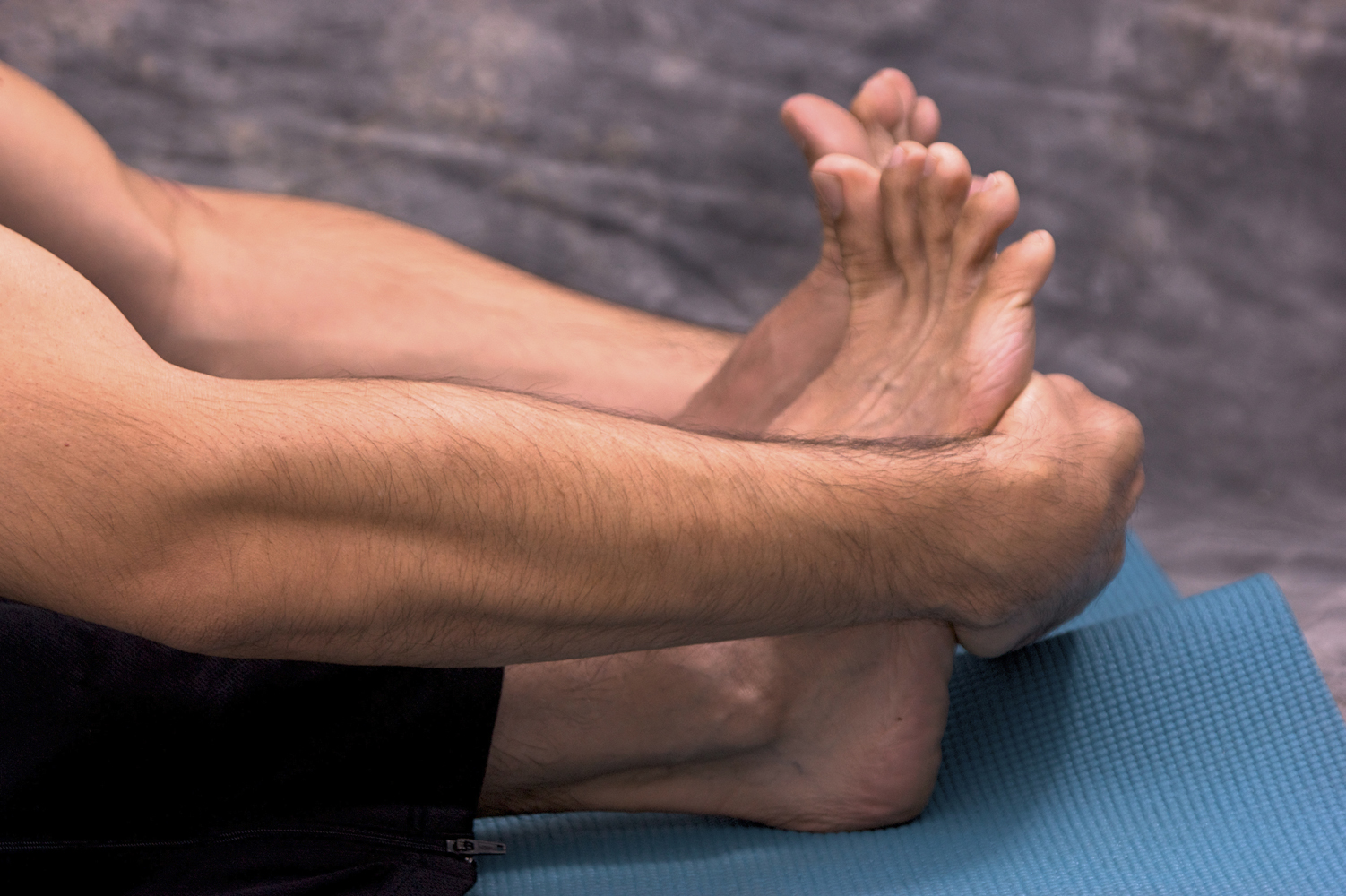 The benefits of performing stretching techniques for your feet may positively affect the general well-being of the body. Research has shown that walking may be one of the best forms of exercising the feet, in addition to flexing and pointing toes frequently throughout the day. The feet will become stronger when resistance exercises are performed, and this is typically accomplished by utilizing exercise bands or weights. Flexibility may be attained by sitting in a chair, and rotating one ankle at a time in one direction. This ankle rotation should be repeated approximately 15 times, followed by reversing the direction, and repeating on the other foot. Additionally, the feet will feel good when the soles are properly stretched, and this may be accomplished by pressing the toes into the ground while lifting the heel. It’s suggested to speak with a podiatrist if you would like additional information on how to perform foot stretches.
The benefits of performing stretching techniques for your feet may positively affect the general well-being of the body. Research has shown that walking may be one of the best forms of exercising the feet, in addition to flexing and pointing toes frequently throughout the day. The feet will become stronger when resistance exercises are performed, and this is typically accomplished by utilizing exercise bands or weights. Flexibility may be attained by sitting in a chair, and rotating one ankle at a time in one direction. This ankle rotation should be repeated approximately 15 times, followed by reversing the direction, and repeating on the other foot. Additionally, the feet will feel good when the soles are properly stretched, and this may be accomplished by pressing the toes into the ground while lifting the heel. It’s suggested to speak with a podiatrist if you would like additional information on how to perform foot stretches.
Stretching the feet is a great way to prevent injuries. If you have any concerns with your feet consult with Dr. Howard Horowitz from Bowie Foot & Ankle . Our doctor will assess your condition and provide you with quality foot and ankle treatment.
Stretching the Feet
Stretching the muscles in the foot is an important part in any physical activity. Feet that are tight can lead to less flexibility and make you more prone to injury. One of the most common forms of foot pain, plantar fasciitis, can be stretched out to help ease the pain. Stretching can not only ease pain from plantar fasciitis but also prevent it as well. However, it is important to see a podiatrist first if stretching is right for you. Podiatrists can also recommend other ways to stretch your feet. Once you know whether stretching is right for you, here are some excellent stretches you can do.
- Using a foam roller or any cylindrical object (a water bottle or soda can will do), roll the object under your foot back and forth. You should also exert pressure on the object. Be sure to do this to both feet for a minute. Do this exercise three times each.
- Similar to the previous one, take a ball, such as a tennis ball, and roll it under your foot while seated and exert pressure on it.
- Grab a resistance band or towel and take a seat. If you are using a towel, fold it length wise. Next put either one between the ball of your foot and heel and pull with both hands on each side towards you. Hold this for 15 seconds and then switch feet. Do this three times for each foot.
- Finally hold your big toe while crossing one leg over the other. Pull the toe towards you and hold for 15 seconds. Once again do this three times per foot.
It is best to go easy when first stretching your foot and work your way up. If your foot starts hurting, stop exercising and ice and rest the foot. It is advised to then see a podiatrist for help.
If you have any questions, please feel free to contact our office located in Bowie, MD . We offer the newest diagnostic and treatment technologies for all your foot care needs.
Why Do My Feet Hurt After Standing During the Work Day?
 If you are standing or walking for the majority of the day as a result of your working activities, you may be familiar with the pain and discomfort your feet may experience. Specific foot conditions may amplify and become worse by standing on your feet for most of the day, including pain that may originate from corns, calluses, or certain foot deformities. There may be several options that can be enforced to alleviate a portion of the discomfort, which may include executing changes in the working environment, wearing different types of shoes or using shoe inserts, and standing on suitable floor mats instead of hard floors. Research has shown that moderate relief may be attained by performing simple foot stretches throughout the day. It may also help to elevate the feet when the work day is over, and this may aid in reducing any swelling that may be present. If you would like additional advice on how your feet may feel better while working, it’s suggested to speak with a podiatrist who will be able to provide the correct information.
If you are standing or walking for the majority of the day as a result of your working activities, you may be familiar with the pain and discomfort your feet may experience. Specific foot conditions may amplify and become worse by standing on your feet for most of the day, including pain that may originate from corns, calluses, or certain foot deformities. There may be several options that can be enforced to alleviate a portion of the discomfort, which may include executing changes in the working environment, wearing different types of shoes or using shoe inserts, and standing on suitable floor mats instead of hard floors. Research has shown that moderate relief may be attained by performing simple foot stretches throughout the day. It may also help to elevate the feet when the work day is over, and this may aid in reducing any swelling that may be present. If you would like additional advice on how your feet may feel better while working, it’s suggested to speak with a podiatrist who will be able to provide the correct information.
While working on the feet, it is important to take the proper care of them. For more information about working on your feet, contact Dr. Howard Horowitz from Bowie Foot & Ankle . Our doctor will treat your foot and ankle needs.
Working on Your Feet
Standing on your feet for long periods of time can cause stress and pain in your feet. Your whole body may experience change in terms of posture, back pain, bunions, callouses and or plantar warts. There are ways to avoid these conditions with proper foot care, smart choices and correct posture.
Positive Changes
Negative heeled shoe – Choosing this shoe type places the heel slightly lower than the ball of the foot. These are great for overall foot health. Find shoes that fit you correctly.
Go barefoot – Our feet were not designed to be enclosed for all hours of the day. Try to periodically expose your feet to air.
Eliminate Pain
Foot Exercises – Performing simple exercises, incorporating yoga and doing stretches are beneficial. This will allow increased blood flow to the area and muscles of the foot.
Achilles tendon – Stretching the foot out flat on the floor will relax the calf muscles and tendon. These exercises can be performed almost anywhere. Make sure you add these exercises to your daily regimen.
With a little bit of this information and knowing more about foot health, you will notice changes. Foot stretches and proper footwear will help with pain and prevent further issues.
If you have any questions please feel free to contact our office located in Bowie, MD . We offer the newest diagnostic and treatment technologies for all your foot and ankle needs.
Read more about Working on Your FeetWhat Is a Plantar Wart?
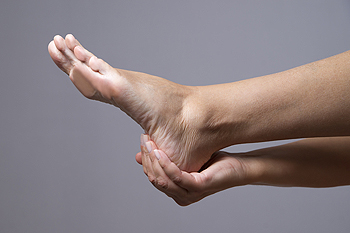 If you notice a small thickened area in the heel or bottom of your foot producing severe pain and discomfort, you may have what is referred to as a verruca wart, which is more commonly known as a plantar wart. It is caused by the human papillomavirus (HPV), and will typically attack the skin on the bottom of the feet. It typically lives and thrives in moist and warm environments which may include public pools and surrounding areas, shower room floors and locker rooms. It is known to enter the body through tiny cracks in the skin and grows into the heel as a result of pressure the foot endures while walking. Many people may notice a small and callused area where the wart has formed, and small black dots may be present in the center. If you have developed a plantar wart, please speak to a podiatrist who can properly treat this condition.
If you notice a small thickened area in the heel or bottom of your foot producing severe pain and discomfort, you may have what is referred to as a verruca wart, which is more commonly known as a plantar wart. It is caused by the human papillomavirus (HPV), and will typically attack the skin on the bottom of the feet. It typically lives and thrives in moist and warm environments which may include public pools and surrounding areas, shower room floors and locker rooms. It is known to enter the body through tiny cracks in the skin and grows into the heel as a result of pressure the foot endures while walking. Many people may notice a small and callused area where the wart has formed, and small black dots may be present in the center. If you have developed a plantar wart, please speak to a podiatrist who can properly treat this condition.
Plantar warts can be very uncomfortable. If you need your feet checked, contact Dr. Howard Horowitz from Bowie Foot & Ankle . Our doctor will assist you with all of your foot and ankle needs.
About Plantar Warts
Plantar warts are the result of HPV, or human papillomavirus, getting into open wounds on the feet. They are mostly found on the heels or balls of the feet.
While plantar warts are generally harmless, those experiencing excessive pain or those suffering from diabetes or a compromised immune system require immediate medical care. Plantar warts are easily diagnosed, usually through scraping off a bit of rough skin or by getting a biopsy.
Symptoms
- Lesions on the bottom of your feet, usually rough and grainy
- Hard or thick callused spots
- Wart seeds, which are small clotted blood vessels that look like little black spots
- Pain, discomfort, or tenderness of your feet when walking or standing
Treatment
- Freezing
- Electric tool removal
- Laser Treatment
- Topical Creams (prescription only)
- Over-the-counter medications
To help prevent developing plantar warts, avoid walking barefoot over abrasive surfaces that can cause cuts or wounds for HPV to get into. Avoiding direct contact with other warts, as well as not picking or rubbing existing warts, can help prevent the further spread of plantar warts. However, if you think you have developed plantar warts, speak to your podiatrist. He or she can diagnose the warts on your feet and recommend the appropriate treatment options.
If you have any questions please feel free to contact our office located in Bowie, MD . We offer the newest diagnostic and treatment technologies for all your foot and ankle needs.
Does Plantar Fasciitis Cause Heel Spurs?
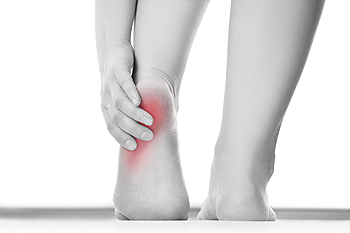 The painful and uncomfortable condition that is known as a heel spur occurs when a hard growth develops into the arch of the foot. The most common cause for this condition to occur is the ailment known as plantar fasciitis. The plantar fascia is located on the bottom of the foot and connects the heel bone to the toes. If this band of tissue should become inflamed and becomes a chronic condition, a heel spur may develop. The symptoms that are generally associated with heel spurs may be pain that is experienced in the heel of the foot upon arising in the morning. This may dissipate as the day progresses, which may be a result of walking activities that may warm and stretch the plantar fascia. A proper diagnosis is typically performed, which includes having an X-ray, MRI, or ultrasound taken, and these methods may be helpful in determining the extent of the growth. If you have developed a heel spur, it is advised to consult with a podiatrist as quickly as possible, so the correct treatment can begin.
The painful and uncomfortable condition that is known as a heel spur occurs when a hard growth develops into the arch of the foot. The most common cause for this condition to occur is the ailment known as plantar fasciitis. The plantar fascia is located on the bottom of the foot and connects the heel bone to the toes. If this band of tissue should become inflamed and becomes a chronic condition, a heel spur may develop. The symptoms that are generally associated with heel spurs may be pain that is experienced in the heel of the foot upon arising in the morning. This may dissipate as the day progresses, which may be a result of walking activities that may warm and stretch the plantar fascia. A proper diagnosis is typically performed, which includes having an X-ray, MRI, or ultrasound taken, and these methods may be helpful in determining the extent of the growth. If you have developed a heel spur, it is advised to consult with a podiatrist as quickly as possible, so the correct treatment can begin.
Heel spurs can be incredibly painful and sometimes may make you unable to participate in physical activities. To get medical care for your heel spurs, contact Dr. Howard Horowitz from Bowie Foot & Ankle . Our doctor will do everything possible to treat your condition.
Heels Spurs
Heel spurs are formed by calcium deposits on the back of the foot where the heel is. This can also be caused by small fragments of bone breaking off one section of the foot, attaching onto the back of the foot. Heel spurs can also be bone growth on the back of the foot and may grow in the direction of the arch of the foot.
Older individuals usually suffer from heel spurs and pain sometimes intensifies with age. One of the main condition's spurs are related to is plantar fasciitis.
Pain
The pain associated with spurs is often because of weight placed on the feet. When someone is walking, their entire weight is concentrated on the feet. Bone spurs then have the tendency to affect other bones and tissues around the foot. As the pain continues, the feet will become tender and sensitive over time.
Treatments
There are many ways to treat heel spurs. If one is suffering from heel spurs in conjunction with pain, there are several methods for healing. Medication, surgery, and herbal care are some options.
If you have any questions feel free to contact our office located in Bowie, MD . We offer the latest in diagnostic and treatment technology to meet your needs.
What Causes Hammertoe?
 Genetic factors may cause the muscles and tendons in the toes to become weak, and this may cause a condition that is referred to as hammertoe. It will typically affect the second and third toes and occur when the middle joint becomes dislocated. Additional reasons for this to develop may come from having arthritis in the feet, or from wearing shoes that do not have enough room in the toe area. Cushioned pads may be used to reduce mild discomfort that may be present. For more severe cases of hammertoe, a proper diagnosis is needed to determine the extent of the deformity, and surgery may be necessary to permanently straighten the toes. If you have this condition, it is strongly suggested to seek the counsel of a podiatrist who can guide you toward beginning proper treatment.
Genetic factors may cause the muscles and tendons in the toes to become weak, and this may cause a condition that is referred to as hammertoe. It will typically affect the second and third toes and occur when the middle joint becomes dislocated. Additional reasons for this to develop may come from having arthritis in the feet, or from wearing shoes that do not have enough room in the toe area. Cushioned pads may be used to reduce mild discomfort that may be present. For more severe cases of hammertoe, a proper diagnosis is needed to determine the extent of the deformity, and surgery may be necessary to permanently straighten the toes. If you have this condition, it is strongly suggested to seek the counsel of a podiatrist who can guide you toward beginning proper treatment.
Hammertoes can be a painful condition to live with. For more information, contact Dr. Howard Horowitz of Bowie Foot & Ankle . Our doctor will answer any of your foot- and ankle-related questions.
Hammertoe
Hammertoe is a foot deformity that occurs due to an imbalance in the muscles, tendons, or ligaments that normally hold the toe straight. It can be caused by the type of shoes you wear, your foot structure, trauma, and certain disease processes.
Symptoms
- Painful and/or difficult toe movement
- Swelling
- Joint stiffness
- Calluses/Corns
- Physical deformity
Risk Factors
- Age – The risk of hammertoe increases with age
- Sex – Women are more likely to have hammertoe compared to men
- Toe Length – You are more likely to develop hammertoe if your second toe is longer than your big toe
- Certain Diseases – Arthritis and diabetes may make you more likely to develop hammertoe
Treatment
If you have hammertoe, you should change into a more comfortable shoe that provides enough room for your toes. Exercises such as picking up marbles may strengthen and stretch your toe muscles. Nevertheless, it is important to seek assistance from a podiatrist in order to determine the severity of your hammertoe and see which treatment option will work best for you.
If you have any questions, please feel free to contact our office located in Bowie, MD . We offer the newest diagnostic and treatment technologies for all your foot care needs.
Dealing with Blisters
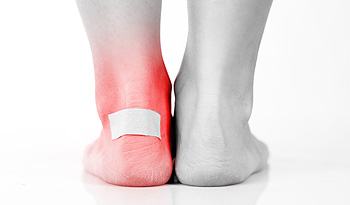 Blisters are an inconvenience almost everyone has faced at least once. Blisters are the result of friction between your skin and your footwear. They are most commonly found on the back of the ankle and can cause discomfort during daily activities. It is best to keep the blister covered with a small bandage, because keeping it exposed will cause pain, but also might lead to the blister popping. Keeping the blister from popping is key in the healing process. The skin that is exposed after a blister is popped is raw and prone to infection. Infection can cause more complications and pain, so it is best to try to keep it covered and avoid popping it. If it does accidentally pop, then bandaging it becomes even more essential, because this will help protect the small wound from harmful bacteria. If you have a blister that you are concerned about, then it is recommended you speak with a podiatrist to learn how to properly take care of it.
Blisters are an inconvenience almost everyone has faced at least once. Blisters are the result of friction between your skin and your footwear. They are most commonly found on the back of the ankle and can cause discomfort during daily activities. It is best to keep the blister covered with a small bandage, because keeping it exposed will cause pain, but also might lead to the blister popping. Keeping the blister from popping is key in the healing process. The skin that is exposed after a blister is popped is raw and prone to infection. Infection can cause more complications and pain, so it is best to try to keep it covered and avoid popping it. If it does accidentally pop, then bandaging it becomes even more essential, because this will help protect the small wound from harmful bacteria. If you have a blister that you are concerned about, then it is recommended you speak with a podiatrist to learn how to properly take care of it.
Blisters may appear as a single bubble or in a cluster. They can cause a lot of pain and may be filled with pus, blood, or watery serum. If your feet are hurting, contact Dr. Howard Horowitz of Bowie Foot & Ankle . Our doctor can provide the care you need to keep you pain-free and on your feet.
Foot Blisters
Foot blisters are often the result of friction. This happens due to the constant rubbing from shoes, which can lead to pain.
What Are Foot Blisters?
A foot blister is a small fluid-filled pocket that forms on the upper-most layer of the skin. Blisters are filled with clear fluid and can lead to blood drainage or pus if the area becomes infected.
Symptoms
(Blister symptoms may vary depending on what is causing them)
- Bubble of skin filled with fluid
- Redness
- Moderate to severe pain
- Itching
Prevention & Treatment
In order to prevent blisters, you should be sure to wear comfortable shoes with socks that cushion your feet and absorb sweat. Breaking a blister open may increase your chances of developing an infection. However, if your blister breaks, you should wash the area with soap and water immediately and then apply a bandage to the affected area. If your blisters cause severe pain it is important that you call your podiatrist right away.
If you have any questions, please feel free to contact our office located in Bowie, MD . We offer the newest diagnostic and treatment technologies for all your foot care needs.
